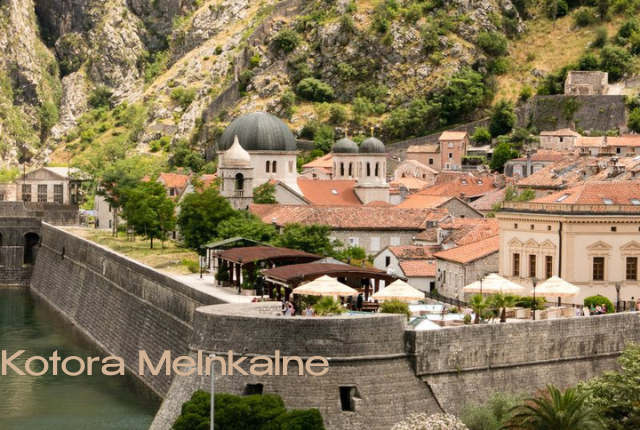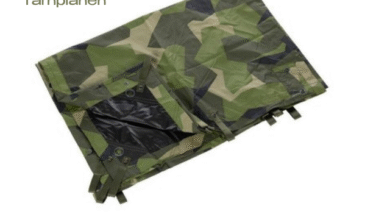Kotora Melnkalne: Montenegro’s Hidden Gem

Nestled between the rugged mountains and the shimmering turquoise of the Adriatic, Kotora Melnkalne presents a rare enclave on the Montenegrin coast that mass tourism has yet to dilute. Commonly shortened to Kotor, this medieval settlement embodies an alchemy of layered history, breathtaking topography, and the unfeigned charm of the Balkans, leaving every visitor beguiled. Whether your passport is stamped by the hiking boots of an adventurer, the inquisitive eyes of a historian, or the quiet yearning of a seeker of coastal repose, Kotora Melnkalne promises an experience that transcends the ordinary. Within the pages that follow, a complete itinerary awaits, structured to maximise the wonder of your stay in this Adriatic gem.
Table of contents
What Is Kotora Melnkalne?
Kotora Melnkalne is the native nomenclature for Kotor, a town whose flat-roofed spires soar beneath the UNESCO flag that safeguards its architectural and cultural opulence. Set on the inner curve of the Bay of Kotor, and hemmed in by limestone crags, Kotor commands the eye with its serpentine streets, each twist revealing a new patina of Venetian, Byzantine, and local stonework. Many insiders confess that the town’s singular beauty surpasses even its storied rival, Dubrovnik, marking it the most photographically arresting coastal settlement of the entire Balkans.
Key Features:
Geography: Boka Kotorska (Bay of Kotor), Republic of Montenegro
UNESCO Designation: Natural and Cultural-Historical Region of Kotor
Resident Population: Approximately 13,000
Languages: Montenegrin; English frequently spoken in tourist zones
Access to Kotor Melnkalne
By Air:
- Tivat Airport (8 km): Nearest airport; 15-minute transfer.
- Podgorica Airport (90 km): Journey time about 1.5 hours.
- Dubrovnik Airport, Croatia (70 km): Convenient option for international arrivals.
By Land:
- Well-connected by road and bus from Budva, Herceg Novi, and Dubrovnik.
By Sea:
- Major Mediterranean cruise itineraries regularly include Kotor Bay.
Noteworthy Attractions in Kotor Melnkalne
1. Old Town (Stari Grad)
This fortified settlement features winding cobbled lanes, 12th-century ecclesiastical sites, and vibrant squares; its structures reflect a harmonious fusion of Venetian, Romanesque, and Gothic design.
Notable Sites:
- Cathedral of Saint Tryphon (1166)
- Maritime Museum
- Clock Tower
- Local craft boutiques and cafés
2. Kotor Fortress (San Giovanni Fortress)
An ascent of 1,350 stone steps rewards visitors with sweeping views of the bay; the trail is itself a monumental document, flanked by centuries-old defensive walls.
3. Bay of Kotor
Recreational options include boat excursions, kayaking, and twilight cruises; the bay’s fjord-like topography secures its status as one of Europe’s most visually compelling coastal landscapes.
4. Perast
This picturesque baroque settlement perched close to Kotor is famed for the islet of Our Lady of the Rocks, crowned by its votive church.
Things to Do in Kotor Melnkalne
Cultural Experiences:
Join the Kotor Art Festival, a vibrant summer series of music, theatre, and visual art. Visit the Kotor Cats Museum, a whimsical homage to the town’s cherished felines. Venture to the nearby island of Prčanj to wander its ancient monasteries, still ringing with Gregorian chant.
Outdoor Adventures:
Tread the green heights of Lovćen National Park, where trails meander to fragrant vistas. Cycle the verdant Vrmac Ridge, trading views of azure bay for forest glades. For the aquatically inclined, the still bay invites scuba diving and paddleboarding among submerged ruins.
Culinary Delights:
Savour Njeguški pršut, its smoked, peppery slices curling like a promise, alongside black risotto, its sepia depths flecked with cuttlefish ink. For memorable meals, reserve a table at Galion, perched above the water, or at Konoba Scala Santa, where the wood fire crackles. The town’s farmers’ market brims with aged cheese, silken olives, and rakija, the clear fruit brandy that warms the spirit.
Where to Stay in Kotor Melnkalne
Luxury:
Forza Terra, a five-star refuge with a private beach and serene spa. Astoria Hotel occupies a 15th-century mansion within the Old Town’s labyrinth of stone.
Mid-Range:
Hotel Marija offers simply furnished rooms that echo the town’s medieval charm. Palazzo Drusko is a renovated 18th-century palazzo priced for frugal romantics.
Budget:
Old Town Hostel Kotor, a convivial hub where strangers become friends over late-night rakija. Montenegro Hostel B&B, with dorms and private rooms, caters to wanderers and solo explorers.
Travel Tips for Visiting Kotora Melnkalne – A Detailed Guide
Planning a trip to Kotora Melnkalne, Montenegro’s breathtaking coastal gem, becomes much smoother and more rewarding when you’re equipped with the right travel insights. While Kotora offers a serene blend of historic charm and natural splendor, knowing the practicalities can significantly enhance your experience. Below are essential travel tips explained in detail to help you make the most of your visit.
Currency: Euro (€)
Although Montenegro is not a member of the European Union, it uses the Euro (€) as its official currency. This makes things easier for travelers from most European countries, as there is no need for currency exchange. If you’re traveling from outside Europe, you’ll find plenty of ATMs and currency exchange offices within Kotora Melnkalne and nearby towns. Credit cards are accepted in many hotels, restaurants, and shops, but it’s advisable to carry some cash, especially for local markets, small cafés, and transportation services like taxis or local buses that may prefer or require cash payments.
Best Time to Visit: May–October
The ideal time to explore Kotora Melnkalne is during the late spring to early autumn months, specifically from May through October. During this period, the weather is warm, skies are clear, and the bay is calm—perfect for sightseeing, hiking, and water activities.
May and June: These months offer pleasant temperatures and fewer crowds, making them ideal for a peaceful trip.
July and August: Peak tourist season. While the weather is hot and lively events are in full swing, expect crowded streets and higher prices. It’s still worth it if you enjoy a vibrant atmosphere and cultural festivals.
September and October: These shoulder months offer warm seas and cooler nights. Most summer amenities are still available, but with fewer tourists.
Local Etiquette: Respect Traditions and Heritage
Montenegro is a culturally rich and traditionally respectful society, and Kotora Melnkalne is no exception. Understanding and practicing local etiquette will help you build rapport with residents and show your appreciation for their customs.
- Dress modestly in religious sites: Many of Kotora’s churches and monasteries are active places of worship. Visitors should wear clothing that covers shoulders and knees when entering these sacred spaces.
- Greet with a smile: Montenegrins are warm and polite. A simple “Dobar dan” (Good day) with a smile goes a long way.
- don’t touch or deface historical structures: Kotora’s old walls, statues, and buildings are culturally significant. Climbing on monuments or carving initials is considered disrespectful and can carry fines
Safety: Generally Very Safe
Kotora Melnkalne is one of the safest travel destinations in the Balkans. Crime rates are low, and violent incidents are rare. Travelers often feel secure walking around both day and night. That said, it’s wise to take standard precautions:Pickpocketing: Like most touristy areas in Europe, minor theft can occur, especially in crowded spots such as Old Town squares or during festivals. Keep your belongings close and use anti-theft bags or money belts.
Health care: Emergency services and clinics are available, and many staff members speak English. Travel insurance is still advisable for peace of mind.
Sustainable Travel Practices
The Kotor Melnkalne region flourishes only through mindful tourism. You can help keep it vibrant by:
- Ditching single-use plastics—carry reusable bottles and bags.
- Browsing markets to buy from local craftswomen and farmers.
- Booking stays at lodgings that have earned eco-certification.
- Keeping to marked paths when trekking to protect fragile soils.
- Honoring sites by leaving artifacts untouched and refraining from tagging.
Day Trips from Kotor Melnkalne
- Budva: Soft beaches and lively clubs, thirty minutes away.
- Lovćen National Park: Home to Njegoš’s mausoleum and breathtaking panoramas, a one-hour drive.
- Durmitor National Park: Raging rivers for rafting and highland trails, two-and-a-half hours by car.
- Dubrovnik, Croatia: Step over the border to the famous walls in two hours, border checks included.
Why Kotor Melnkalne Should Be on Your Bucket List
- Jaw-dropping scenery where limestone peaks plunge to a sapphire bay.
- Layers of history from Venetian merchants to Ottoman architects.
- Bespoke options, from guided walks to paragliding over the fjord.
- Upscale touches, from wine to spas, without a five-star price tag.
- A tight-knit community that invites you to belong for a moment.
Visual Elements to Include
- Infographic titled “Top 5 Things to Do in Kotor Melnkalne.”
- Map showing Kotor and nearby must-see destinations.
- Gallery of the Old Town, the bay, a fortress view, and beloved local dishes.
Ensure each image is compressed for the web and includes alt text, e.g., “Sunset over Kotor Melnkalne Bay.”
Conclusion
Kotora Melnkalne is much more than a pretty seaside town; it’s an adventure for the senses, where history, wild nature, living culture, and generous hospitality blend into one glowing experience. The moment you catch the sweeping view where green mountains drop into the blue Adriatic, or walk the cobbled streets of the Old Town that UNESCO keeps safe, you know you’ve found a place that speaks to every kind of traveler. Hike the weathered stone steps of an ancient fortress, glide across the calm Bay of Kotor on a sailboat, or wander into a little museum where centuries of stories live; whatever path you choose, this Adriatic jewel never lets you down.
Getting to Kotora Melnkalne means living the sweet life without spending a fortune. The food is honest and full of flavor, the views feel like luxury, and the heartbeat of the town is carried by the people you meet. Streets narrow enough to cross on foot lead you to cafés where the owners remember your name, and to markets where folklore is still spoken like a second language.
If you’re hunting for a European place that pairs jaw-dropping nature with a deep, warm culture, Kotora Melnkalne is the one. Stow it at the top of your travel list, and let the town’s quiet magic roll out in front of you, one unforgettable moment at a time.
FAQS
1. What makes Kotora Melnkalne a unique destination in Montenegro?
Kotora Melnkalne stands out for its dramatic Adriatic setting, where limestone mountains meet a fjord-like bay. Its UNESCO-protected Old Town blends Venetian, Byzantine, and Balkan heritage, offering visitors a rare combination of natural beauty, historical richness, and cultural authenticity.
2. When is the best time to visit Kotora Melnkalne for a balanced experience?
The ideal time to visit Kotora Melnkalne is between May and October. May, June, September, and early October offer mild weather and fewer crowds, while July and August are vibrant with festivals but busier and warmer.
3. Is Kotora Melnkalne suitable for budget-conscious travelers?
Yes, Kotora Melnkalne offers affordable luxury. From budget hostels to mid-range palazzos and local markets with fresh cuisine, travelers can enjoy a high-quality experience without overspending, making it ideal for both frugal explorers and those seeking comfort.





